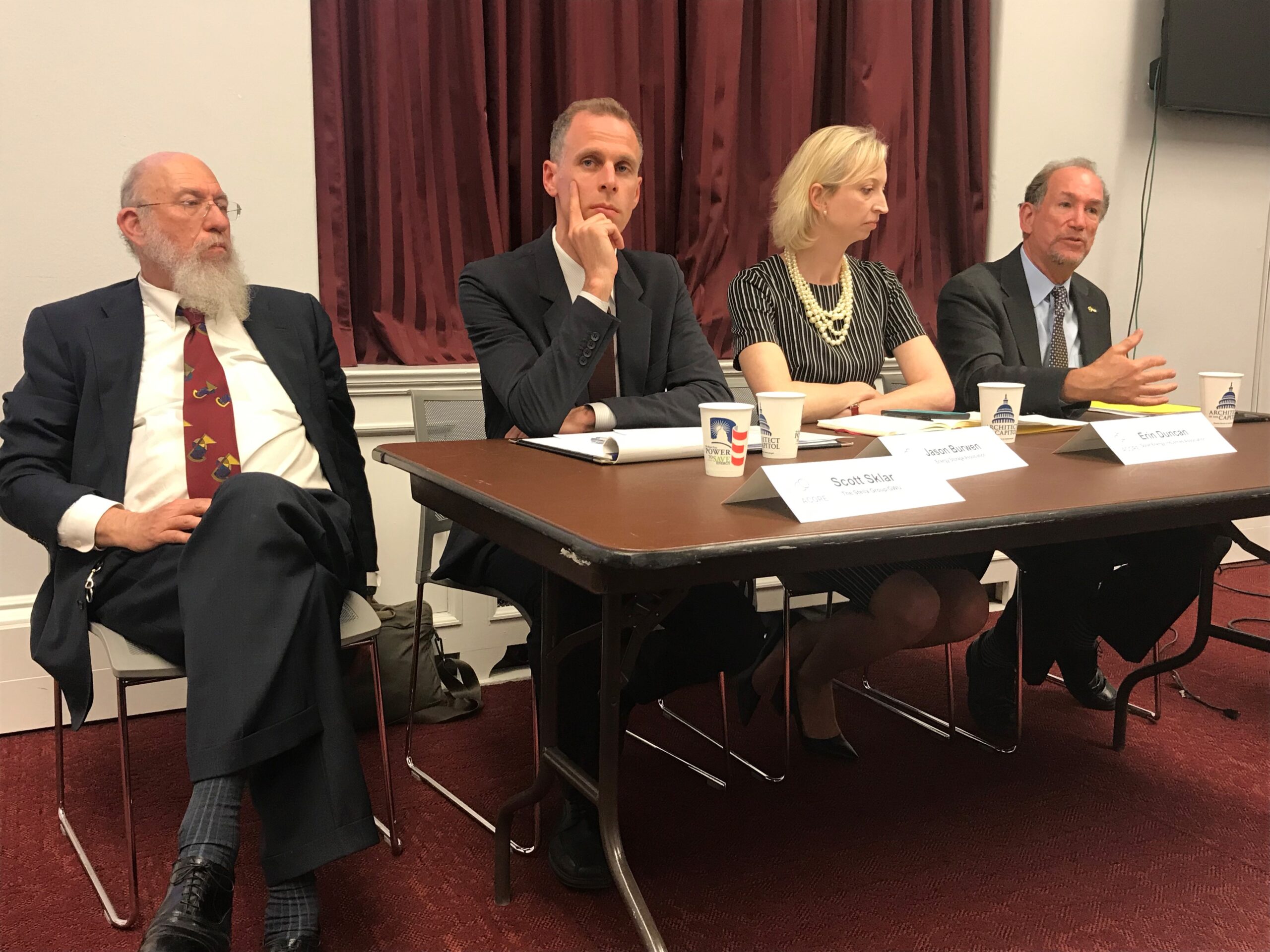- Energy Storage & Decarbonization Pathways
- Tax Incentives & Appropriations
- Transmission & Power Markets
- Blog
Energy storage tax credit, transmission spotlighted as bipartisan opportunities at ACORE’s Hill briefing
[vc_row][vc_column][vc_empty_space height=”23px”][/vc_column][/vc_row][vc_row][vc_column][vc_column_text]On April 4, ACORE convened a Capitol Hill briefing with fellow leaders in the renewable energy and energy storage industries, including the Solar Energy Industries Association (SEIA) and the Energy Storage Association (ESA). A packed room of congressional staff and members of the media learned from the speakers how to continue renewables’ rapid growth with bipartisan support, such as applying a tax credit to energy storage and planning more transmission to modernize the grid.

Gregory Wetstone, ACORE’s President and CEO, kicked things off with an overview on the state of the industry today and the key policies and market drivers that will help accelerate America’s transition to a renewable energy economy.
“Renewable energy is a global phenomenon. It has accumulated over $3 trillion dollars of investment and is America’s number one source of private infrastructure development today,” Wetstone told the crowd. “ It’s not a question of when, but how fast we can transition to renewable energy in this country.”
Moderating the briefing was ACORE’s new Chief Operating Officer, Bill Parsons.
“It’s an exciting time for renewable energy,” said Parsons, who formerly ran the House Renewable Energy and Energy Efficiency Caucus. With all of the interest in climate solutions this spring, both on the Hill and across the country, Parsons told the staffers, “You have some decisions to make.”
As production and investment tax credits for wind and solar phase down, a proposed technology-neutral tax credit for carbon-free sources could potentially take over, Wetstone told Hill staff.
Otherwise, he said, “Over time, the tax code becomes more and more tilted against renewable power.”
SEIA Vice President of Congressional Affairs, Erin Duncan, emphasized that solar is a job-creating technology and should receive bipartisan support from Congress. She also said SEIA supports “the modernization of our electrical grid” as part of infrastructure discussions.
“Transmission is going to be critical to any of these ambitious proposals to get dramatic reductions in greenhouse gas emissions,” Wetstone told the Washington Examiner after the briefing. “We’re putting ourselves at a competitive disadvantage globally if we continue with an antiquated grid.”
Jason Burwen, ESA’s Vice President of Policy, outlined energy storage’s growth and encouraged the audience to support legislation introduced by Rep. Mike Doyle (D-PA) to make energy storage technologies fully eligible for a 30 percent investment tax credit (ITC).
Storage plus renewables can do a far better job than diesel generators in keeping a wide array of critical services available to Americans during weather emergencies, according to Scott Sklar, President of The Stella Group and Director of George Washington University’s Environment & Energy Management Institute – including communications, the Internet, first responders, food, medicine, drinking water, pipelines, heating and cooling, transportation, and wastewater treatment. “I don’t have to worry about how to get the solar and the wind to the site,” he said. “It’s already there.”
keeping a wide array of critical services available to Americans during weather emergencies, according to Scott Sklar, President of The Stella Group and Director of George Washington University’s Environment & Energy Management Institute – including communications, the Internet, first responders, food, medicine, drinking water, pipelines, heating and cooling, transportation, and wastewater treatment. “I don’t have to worry about how to get the solar and the wind to the site,” he said. “It’s already there.”
The same day as the briefing, 110 House members sent a letter that broadly supported clean energy incentives to Ways and Means Chairman Richard Neal (D-MA), an effort applauded by ACORE.
“Providing long-term certainty for clean energy tax incentives would allow the U.S. to achieve its carbon reduction goals while dramatically boosting clean energy jobs, U.S. investment in electric generation and our global position as a renewable energy leader,” said Wetstone in a statement about the letter. [/vc_column_text][/vc_column][/vc_row][vc_row][vc_column][/vc_column][/vc_row][vc_row][vc_column][/vc_column][/vc_row]
Join leaders from across the renewable energy sector.

What will our next 20 years look like? Here’s the truth: they’ll be better with ACORE at the forefront of energy policy.
Shannon Kellogg
Amazon Web Services (AWS)
